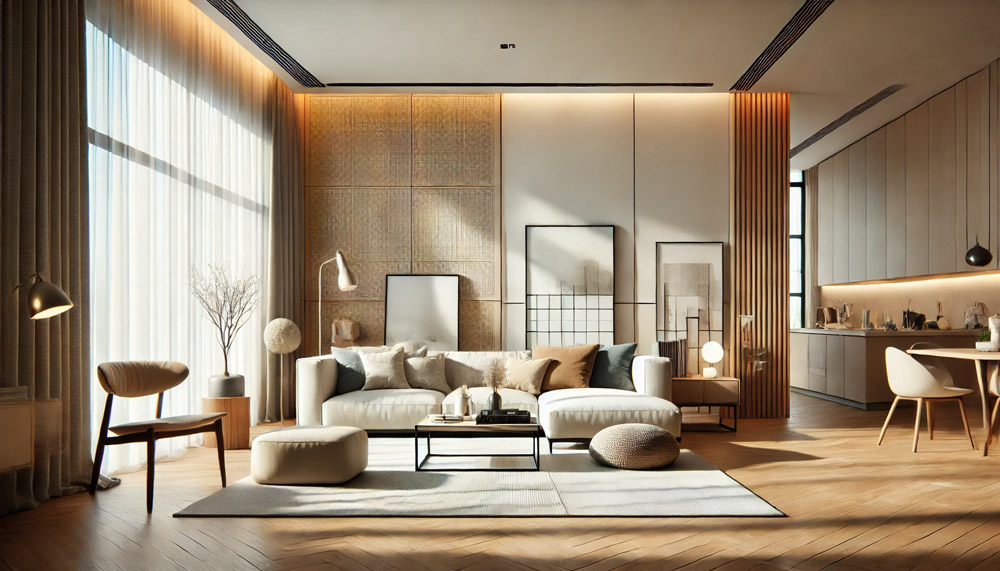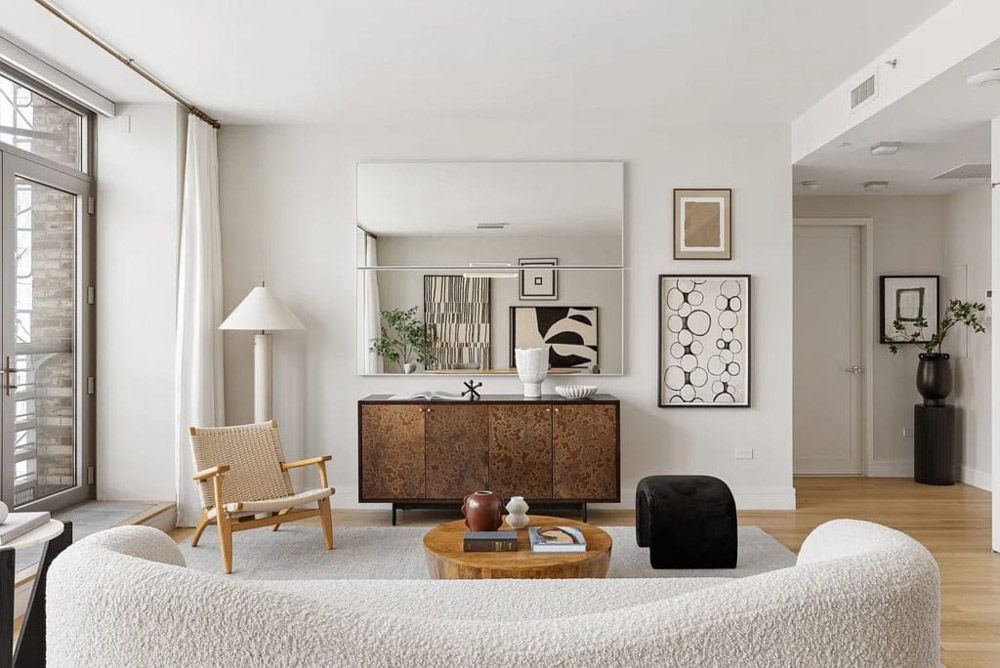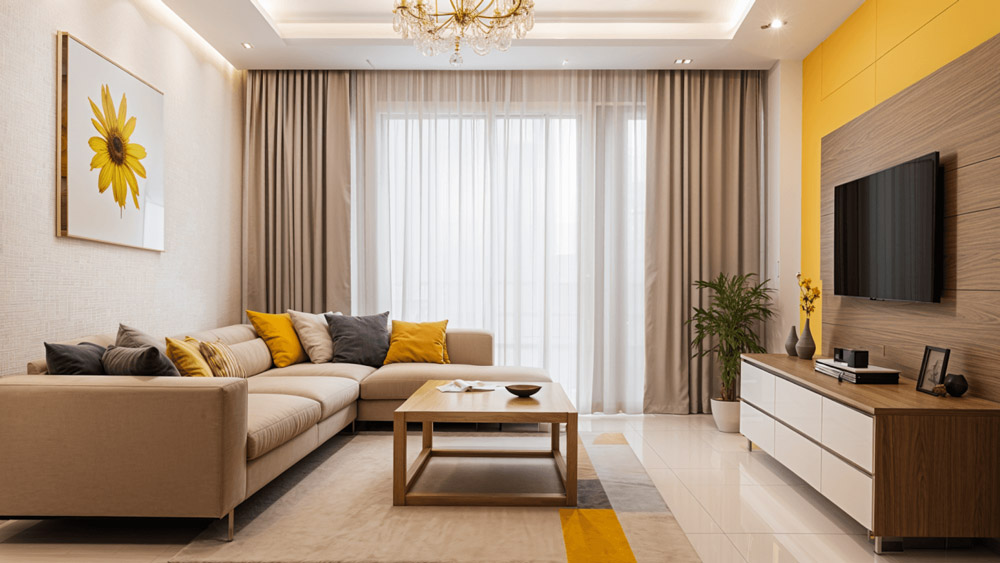Minimalist décor is beloved for its simplicity, functionality, and serene aesthetics. Rooted in the idea of “less is more,” this style strips away excess to reveal spaces that are clean, uncluttered, and intentional. But for many, minimalism can also evoke feelings of sterility or emptiness, making a home feel more like a showroom than a sanctuary.
The good news? Minimalism doesn’t have to feel cold or impersonal. By embracing warmth, texture, and personality within the minimalist framework, you can create spaces that feel both peaceful and inviting. In this article, we’ll explore how to achieve a minimalist interior without sacrificing comfort or character.
Contents
Understanding Minimalist Décor
Minimalist interior design is a philosophy centered on simplicity, functionality, and clarity. Inspired by Japanese design principles and modernist ideals, minimalism focuses on the essentials: clean lines, restrained color palettes, and thoughtfully chosen furnishings.
The aesthetic typically includes:
- Neutral or monochromatic color schemes
- Uncluttered surfaces
- Furniture with sleek, geometric shapes
- Open floor plans and abundant natural light
However, when not balanced with warmth and texture, minimalist spaces can feel austere or empty. The key lies in subtle but impactful design choices that soften the look while preserving the core principles of minimalism.
Why Do Minimalist Spaces Sometimes Feel Cold?

Several common design missteps can make minimalist interiors feel sterile:
Monochromatic Overload: While white and gray are staples of minimalist design, using them exclusively can result in a clinical feel.
Lack of Texture: Minimalist spaces often forgo heavy decoration, but skipping texture altogether creates a flat, lifeless atmosphere.
Too Few Personal Touches: In the pursuit of decluttering, many people remove all traces of personality, making rooms feel impersonal and unwelcoming.
Excess Negative Space: While open space is essential, an overly sparse room can feel incomplete or even uncomfortable.
Avoiding these pitfalls requires a shift in how we interpret minimalism—not as the absence of things, but as a celebration of intentional living.
Principles for Creating Warm and Inviting Minimalist Spaces
To keep your minimalist décor feeling warm and livable, apply the following principles:

1. Design with Intention
Every item in a minimalist home should have a purpose, whether it’s functional, emotional, or aesthetic. Curate rather than eliminate. Keep items that support how you live, and display objects that bring joy or meaning.
Intentional design isn’t about how little you have—it’s about how well your belongings serve your life.
2. Use Warm Neutrals and Earthy Tones
Replace stark whites and cool grays with warm neutrals like beige, taupe, sand, and soft terracotta. These hues offer the same calming benefits of minimalism without the chill.
Natural tones derived from wood, stone, and earth also ground a space, making it feel more human and less synthetic.
3. Layer with Texture
Texture adds visual interest without clutter. Consider woven baskets, chunky knit throws, linen curtains, or hand-thrown ceramics. These tactile elements introduce warmth while maintaining simplicity.
Use contrasting materials—such as rough wood against smooth metal or soft wool on hard leather—to create depth and balance.
4. Bring in Organic Materials
Incorporate elements from nature to soften the space. Wood, rattan, jute, clay, and greenery all contribute to a more grounded, welcoming environment.
Houseplants, in particular, offer a dual benefit: they enhance air quality and provide a natural, calming aesthetic without disrupting the minimalist flow.
5. Focus on Lighting
Lighting plays a critical role in how a space feels. Natural light is always ideal, but you can enhance warmth with ambient lighting, such as floor lamps, wall sconces, or pendant lights with warm-toned bulbs.
Avoid cold, bluish light, and opt for warmer temperatures (2700K–3000K) to create a cozy glow.
6. Balance Negative Space
Open space is a hallmark of minimalist design, but it needs to be balanced. A room should feel airy, not empty.
Use area rugs to define zones in open-concept layouts. Place furniture in ways that create harmony, and ensure that blank areas serve a visual or functional purpose.
7. Add Personal Touches
Minimalist doesn’t mean impersonal. Incorporate curated personal elements like framed family photos, artwork from travels, or heirloom objects.
Choose pieces that reflect your story. A single, well-placed item with emotional resonance can bring soul to a room.
Warm Minimalism Room by Room
Living Room
Use soft, low-profile furniture with cozy fabrics. Add a warm-toned rug, textured cushions, and soft ambient lighting. Keep surfaces mostly clear, but let one or two sculptural pieces shine.
Bedroom
Layer bedding with different materials—cotton, linen, wool. Choose soft lighting and neutral palettes with depth. A simple headboard, minimalist nightstand, and a plant or small artwork can complete the room.
Kitchen
Use open shelving to display beautiful yet functional items like ceramic bowls, wooden utensils, or cookbooks. Maintain clear counters but avoid a “bare” look by adding a plant, woven basket, or glass container with dry goods.
Bathroom
Opt for spa-like serenity. Use plush towels, wood or stone accessories, and greenery. A well-framed mirror and minimalist lighting complete the experience.
Mistakes to Avoid
- Over-Decluttering: Don’t strip a room of all personality in pursuit of minimalism.
- Shiny Surfaces Everywhere: Glossy finishes can feel cold—balance them with matte or textured materials.
- Ignoring Comfort: A room should not only look good but feel good to live in. Prioritize comfort in seating, lighting, and acoustics.
Real-Life Examples of Warm Minimalism
Look to Scandinavian or Japandi interiors for inspiration. These styles integrate minimalism with warmth through natural textures, subdued color palettes, and human-centered design.
You’ll often see oak floors, linen sofas, soft lighting, and well-placed art pieces—minimal, but never lacking in character.
Conclusion
Minimalist décor is about more than just aesthetics—it’s a mindset of intentionality and clarity. When done right, it creates spaces that are not only beautiful but livable. The key to avoiding a cold, empty feel lies in choosing warmth, texture, and personality within the minimalist framework.
Minimalism doesn’t mean removing everything—it means making room for what matters most.

